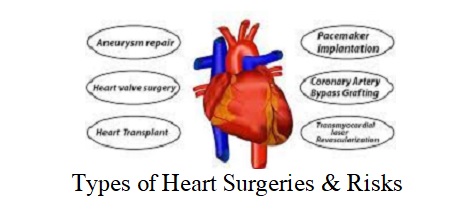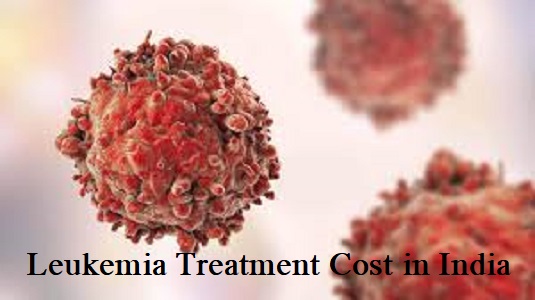Bladder Cancer: Types, Symptoms, Causes, Treatment, Cost & Recovery
Bladder cancer is a rare type of cancer that develops in the lining of the bladder. The bladder is an important part of the urinary system located in the abdomen that stores urine. Bladder cancer is the 10th most prevalent cancer worldwide, with a higher prevalence that affects men more than women. The probability of being diagnosed with bladder cancer over one’s lifetime is roughly 1 in 28 for males and 1 in 91 for women. Read more about bladder cancer treatment, cost, causes, symptoms etc.
The majority of bladder tumors begin in the urothelial cells which make up the bladder’s interior. Depending on the aggressiveness and growth of cancer, it can be categorized as nonmuscle-invasive or muscle-invasive. Urinary abnormalities, pain in the back, and exhaustion are all possible symptoms of bladder cancer. About 75 out of every 100 people diagnosed with bladder cancer survive for at least a year after being diagnosed.
Types of Bladder Cancer
- Urothelial Carcinoma (Transitional Cell Carcinoma): This is the most common kind of bladder cancer contributing to over 90% of all bladder cancers. It begins with urothelial cells, which are the bladder’s lining cells. Other parts of the urinary tract, such as the ureters and urethra, might be affected by urothelial carcinoma. When the bladder tissue expands, urothelial cells may change shape without being damaged.
- Squamous Cell Carcinoma: Squamous cell bladder cancer is associated with continuous irritation or inflammation of the bladder, which is often caused by chronic infections or the use of a urinary catheter for an extended period. The growth of thin, flat squamous cells in the bladder is the first sign of this type of cancer.
- Adenocarcinoma: Adenocarcinoma accounts for roughly 2% of all bladder cancer cases and begins in the glandular cells that produce mucus in the bladder. Because these mucus-secreting glands are not a common cell type in the bladder, adenocarcinoma is rare.
- Small Cell Carcinoma: Small cell carcinoma is a very rare kind of bladder cancer that affects just a small proportion of people. It begins with neuroendocrine cells, which respond to nervous system signals by releasing hormones into the bloodstream.
- Other Common Types: There are some less prevalent types of bladder cancer, such as micropapillary, plasmacytoid, sarcomatoid, and small cell bladder cancer that may have distinct characteristics and behaviors.
Bladder cancer is divided further based on its depth and spread throughout the bladder. These types of bladder cancer are:
- Noninvasive Bladder Cancer: This type of bladder cancer is localized to the bladder lining’s innermost layer and has not spread to the deeper layers or muscles. Noninvasive bladder cancer is less aggressive and has a better prognosis than invasive types.
- Non-Muscle-Invasive Bladder Cancer: It refers to cancer that has not spread beyond the bladder’s muscle wall and is limited to the mucosa (innermost layer) or submucosa (just beneath the mucosa).
- Muscle-Invasive Bladder Cancer: Muscle-invasive bladder cancer indicates that the cancer has spread to the bladder’s muscle wall. This is a more aggressive and advanced stage of bladder cancer that requires more intensive treatment methods such as surgery, chemotherapy, or radiation therapy.
Causes of Bladder Cancer
Bladder cancer is caused by genetic abnormalities that cause normal bladder cells to multiply uncontrollably to produce cancerous growths. Cigarette smoking doubles the chance of developing bladder cancer. Certain chemicals, radiation therapy, and some chemotherapy medications are also linked to an increased risk of bladder cancer. Individuals who have a history of repeated bladder infections, urinary tract difficulties, or who require continuous catheterization may be at a higher risk, especially for a subtype known as squamous cell carcinoma. Bladder cancer can occur at any time and not everyone exposed to these factors will develop the disease.
Signs and Symptoms of Blood Cancer
Various signs and symptoms indicating bladder cancer are:
- Blood in Urine (Hematuria): Blood in the urine is the most common and visible symptom. This can vary from bright red or cola-colored urine to tiny traces of blood detected through lab tests.
- Frequent Urination: People with bladder cancer may suffer increased urination.
- Painful Urination: Some persons with bladder cancer may experience discomfort or pain when urinating.
- Back Pain: In later stages of cancer or if the cancer has progressed, people can suffer from back pain.
- Irritative Bladder Symptoms: These can include dysuria (painful urination), a strong and abrupt need to urinate, and increased urine frequency.
- Difficulty Urinating: Bladder cancer may hinder urine flow, causing it to start and stop or become weaker than usual.
- Persistent Bladder Infections: Some bladder infections may resemble bladder cancer symptoms, resulting in symptoms that remain even after treatment with antibiotics.
Risk Factors associated with Bladder Cancer
The common risk factors associated with bladder cancer are:
- Smoking: Smoking produces toxic substances in the urine, which may damage the bladder lining, and more than double the risk of bladder cancer.
- Increasing Age: The risk of bladder cancer increases with age, with the majority of diagnoses occurring in people over the age of 55.
- Gender: Men are more inclined than women to be diagnosed with bladder cancer.
- Exposure to Chemicals: Certain chemicals used in the manufacture of dyes, rubber, leather, textiles, and paints have been associated with an increased risk of bladder cancer.
- Previous Cancer Treatment: Individuals who received cyclophosphamide or radiation therapy to the pelvis for a previous cancer may be at a higher risk of developing bladder cancer.
- Chronic Bladder Inflammation: Chronic urinary infections or inflammations, particularly those caused by long-term catheter use, may raise the risk of squamous cell bladder cancer.
- Personal or Family History: People who have a personal history of bladder cancer are more likely to develop it again. While bladder cancer does not run in families, having a family history of Lynch syndrome (hereditary nonpolyposis colorectal cancer) can increase your risk of developing urinary system cancer.
- Genetic Factors: Certain genetic mutations and inherited disorders may raise the risk of bladder cancer.
Diagnosis for Bladder Cancer Treatment in India
Several tests and procedures are performed to accurately determine the presence of cancer, determine its stage, and plan appropriate treatment for bladder cancer. These diagnostic methods include:
- Urinalysis: The diagnostic process begins with a urinalysis, which is a standard test that includes evaluating a urine sample. Urine is examined by doctors to look for any abnormalities, such as blood in the urine (hematuria) or evidence of infection. While hematuria is a typical sign of bladder cancer, it is not the only reason and can be caused by several of different diseases.
- Cystoscopy: The primary and most important diagnostic tool for bladder cancer is cystoscopy. It involves putting a cystoscope, a thin, flexible tube with a camera at the tip, down the urethra and into the bladder. This technique lets the doctor inspect the interior of the bladder for any abnormalities or signs of cancer. Biopsies may be obtained during cystoscopy (a biopsy is the removal of a tiny tissue sample for laboratory testing to confirm the presence of cancer as well as its type and stage).
- Transurethral Resection of Bladder Tumor (TURBT): TURBT is often combined with cystoscopy. It’s a surgical method for removing bladder tumors. TURBT has a dual purpose: it not only provides tissue samples for diagnosis but it can also be used as a form of treatment to remove malignant growths, especially in cases of non-invasive bladder cancer.
- Urine Cytology: The study of urine samples under a microscope to detect the presence of abnormal cells is known as urine cytology. While this procedure is helpful, it may not always detect low-grade or early-stage bladder tumors, necessitating the use of urine cytology in combination with other methods of diagnosis.
- Imaging Tests: To determine the size and location of bladder cancer, as well as if it has progressed to nearby structures or distant parts of the body, various imaging techniques are used. Among the most common types of imaging tests are:
- CT Urogram: A contrast dye is injected into a vein and allowed to flow into the kidneys, ureters, and bladder during this procedure. X-ray pictures obtained during the examination provide a detailed view of the urinary system and help in the detection of possible cancerous or abnormal areas.
- Retrograde Pyelogram: This X-ray test provides a comprehensive examination of the upper urinary system. A tiny tube (catheter) is passed through the urethra and into the bladder to inject contrast dye into the ureters, allowing X-ray imaging of the kidneys.
- Determining the Extent of Cancer (Staging): When bladder cancer is diagnosed, additional tests are usually performed to determine its stage and whether it has spread to lymph nodes or other regions of the body. These additional tests include:
- CT Scan: A computed tomography scan provides doctors with detailed cross-sectional images of the abdomen and pelvis, helping them to determine the extent of cancer inside the bladder and surrounding tissues.
- MRI (Magnetic Resonance Imaging): MRI may provide details regarding the tumor’s size, location, and involvement with nearby structures.
- PET (Positron Emission Tomography) Scan: A PET scan detects metabolic activity and detects whether the cancer has progressed beyond the bladder.
- Bone Scan: This test is used to check for cancer in the bones, especially if there are symptoms or signs that indicate bone involvement.
- Chest X-ray: A chest X-ray is performed to detect any potential lung metastases or other chest-related abnormalities.
- Staging the Cancer: The results of the foregoing tests and examinations help doctors in determining the stage of bladder cancer. Staging is an important part of the diagnostic process since it affects treatment and prognosis.
- Stage 0: Cancer is limited to the bladder lining’s innermost layers.
- Stage I: Cancer has spread beyond the inner layers of the bladder wall but has not reached the muscle layer.
- Stage II: Cancer has spread to the bladder wall’s muscle layer.
- Stage III: The cancer has spread to the fatty tissues that surround the bladder.
- Stage IV: Cancer has spread to lymph nodes or distant organs in the body.
Treatment for Bladder Cancer Treatment in India
Bladder cancer treatment in India is affected by the cancer’s stage and severity. The following bladder cancer treatment options in India are:
- Surgery:
- Transurethral Resection of Bladder Tumor (TURBT): This surgery is used to diagnose and treat early-stage bladder cancer. It is done through the urethra, which reduces the need for abdominal incisions. Intravesical chemotherapy may be used in certain cases to prevent cancer recurrence.
- Partial Cystectomy: A partial cystectomy, which removes only the malignant area of a bladder tumour, may be performed for tumours within the bladder.
- Radical Cystectomy: This invasive procedure involves the removal of the whole bladder, surrounding lymph nodes, and, in certain cases, nearby organs such as the prostate (in men) or the uterus and ovaries (in women).
- Chemotherapy:
- Intravenous Chemotherapy: Chemotherapy medications are given intravenously before or after surgery to improve the chances of cure or to target any leftover cancer cells.
- Intravesical Chemotherapy: A catheter is used to deliver chemotherapy medications directly into the bladder. It is used to treat superficial bladder cancer, which affects only the bladder lining.
- Radiation Therapy: When surgery is not an option or is not wanted, radiation therapy may be suggested along with chemotherapy. Cancer cells are targeted and destroyed using targeted radiation beams.
- Immunotherapy:
- Intravesical Immunotherapy: Bacillus Calmette-Guerin (BCG) immunotherapy may be used in the treatment of minor bladder tumors that have not spread to the deeper muscle layers. BCG activates the immune system, causing it to target cancer cells.
- Intravenous Immunotherapy: Drugs that enhance the body’s immune response against cancer cells may be used to treat advanced or recurring bladder cancer.
- Targeted Therapy: When other treatments have failed, targeted therapy may be considered for advanced bladder cancer. These medications are intended to target specific mutations in cancer cells.
Success Rate of Bladder Cancer Treatment in India
The success rate of bladder cancer treatment in India differs based on factors such as the cancer stage and the medication used. Stage I bladder cancer has a high survival possibility, over 88%, especially when detected early and treated quickly. Stage II bladder cancer has a slightly lower survival rate, around 63%. The Bacillus Calmette-Guerin (BCG) treatment for bladder cancer is a highly effective method, with a 90% success rate.
Bladder Cancer Treatment Cost in India
The cost of bladder cancer treatment in India varies depending on the particular treatment plan, cancer stage, and hospital selection. The cost might range from $15000 to $32000 on average. These expenses include surgery, chemotherapy, radiation therapy, immunotherapy, drugs, and hospital stays.
Best Bladder Cancer Treatment Hospitals in India
The best bladder cancer treatment hospitals in India are known for providing comprehensive and cutting-edge oncology care. These hospitals provide cutting-edge technology, skilled medical teams, and a patient-centered approach. Some of the best bladder cancer treatment hospitals in India are:
- Artemis Hospital, Gurgaon
- Indraprastha Apollo Hospitals, New Delhi
- Medanta – The Medicity, Gurgaon
- Fortis Memorial Research Institute, Gurgaon
- BLK Super Speciality Hospital, New Delhi
- Gleneagles Global Hospital, Perumbakkam, Chennai
- Lilavati Hospital, Mumbai
- Sanar International Hospital, Gurgaon
Top Bladder Cancer Treatment Doctors in India
Highly skilled and experienced urologists and oncologists specialize in offering excellent bladder cancer treatment in India. These best doctors for bladder cancer treatment in India are renowned for their skills in managing bladder cancer cases, providing advanced care, and using cutting-edge medical technology.
- Gagan Gautam – Max Super Specialty Hospital, New Delhi
- Sandeep Batra – Max Super Specialty Hospital, New Delhi
- Ankur Bahl – Fortis Memorial Research Institute, New Delhi
- Praveen Kumar Garg – Indraprastha Apollo Hospitals, New Delhi
- Sameer Kaul – Indraprastha Apollo Hospitals, New Delhi
- Kamal Verma – Artemis Hospital, Gurgaon
- Suman Karanth Gupta – Medanta The Medicity, Gurgaon
- Devavrat Arya – Max Super Specialty Hospital, New Delhi
- Anil Mandhani – Fortis Memorial Research Institute, New Delhi
- Rajiv Yadav – Artemis Hospital, Gurgaon
Contact Form
Attach Medical Report
Top Doctors & Surgeons in India
Why Choose Us

Personalized Care
24x7 Supports
Top NABH and JCI accredited Hospitals
Free Cost Estimation & Medical Opinion from Specialist
Get Free Tele/Video Consultation
Visa and Traveling Assistance
Post-surgery with Assistance in Follow-ups














